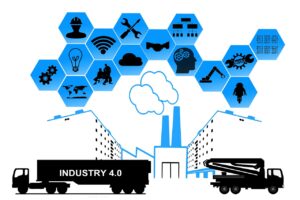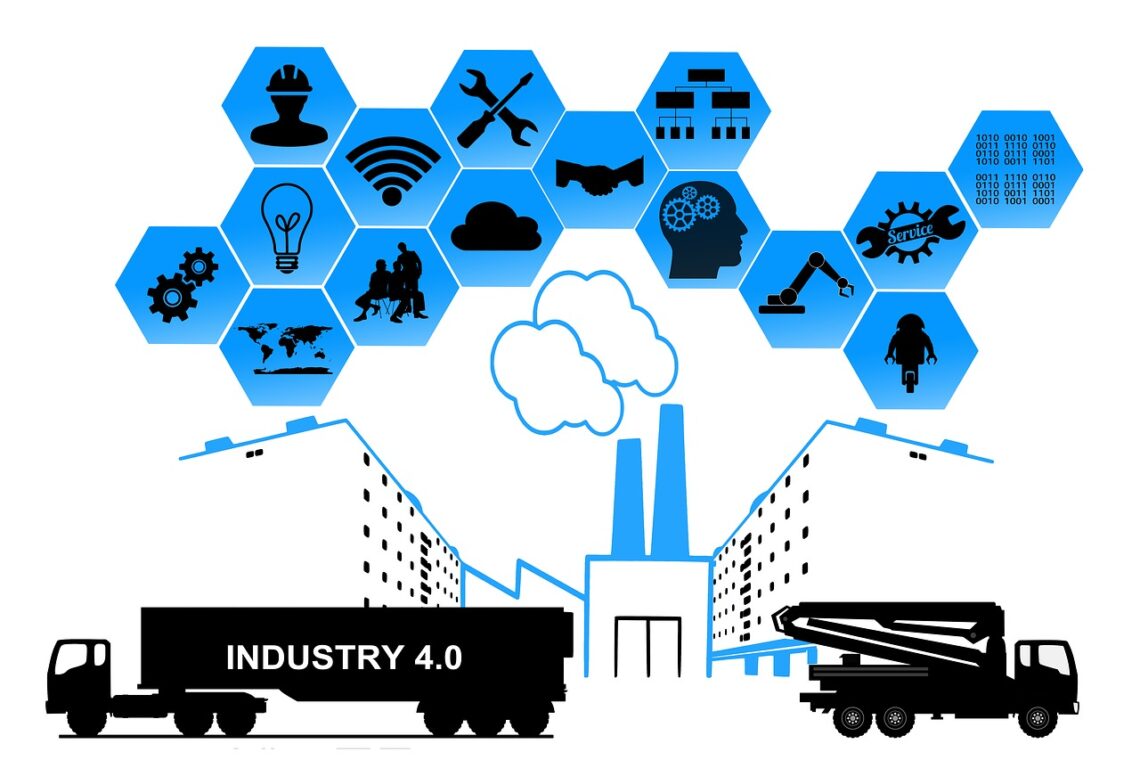 Over the last couple of centuries, manufacturing has undergone many changes courtesy of three industrial revolutions. The first industrial revolution witnessed the rise of mechanization through the use of water and steam power. The second brought about mass production and assembly lines using electricity. Finally, the third industrial revolution enabled computers to automate specific processes and increase their efficiency.
Over the last couple of centuries, manufacturing has undergone many changes courtesy of three industrial revolutions. The first industrial revolution witnessed the rise of mechanization through the use of water and steam power. The second brought about mass production and assembly lines using electricity. Finally, the third industrial revolution enabled computers to automate specific processes and increase their efficiency.
However, one more industrial revolution has come to the fore in the past few decades – Industry 4.0. It aims to use ‘digital’ to a whole new level; interconnectivity between manufacturing departments and processes, access to real-time data, and the birth of cyber-physical systems are the notable promises of Industry 4.0.
With this blog, we begin a four-part series on Industry 4.0. Read on to get an overview of Industry 4.0 and the underlying technologies that make the revolution possible.
What is Industry 4.0?
So, where does Industry 4.0 fit? Why is it the talk-of-the-town? Because it solves challenges that each organization faces today, irrespective of its offerings and industry – the need to have seamless connectivity across the organization for easier flow of information, access to real-time data, and analysis of vast amounts of data to get insights.
By changing how we approach manufacturing, it connects physical operations with digital technology and allows seamless collaboration across departments and stakeholders. Business owners can understand and control each aspect of business more clearly through instant data and powerful analytics. Unlike the traditional approach, this lets you accurately see trends, identify weaknesses, and swiftly take correct necessary actions.
With a focus on real-time data, automation, and ‘intelligent’ digital systems that can make the best decisions on their own, Industry 4.0 shall boost productivity, improve processes, and drive business growth.
The Underlying Technologies –
The fourth industrial revolution is nothing but the impact brought about by a collection of next-gen technologies. Let’s take a quick look at all of them here:
Big Data and Analytics: However, data collection on a large scale alone is not enough. Powerful analytics on data from several sources – production systems, enterprise systems, and customer management systems – is a critical component of Industry 4.0. It enables quicker and more accurate decision making by business owners.
Autonomous Robots: Robots have been around for a long time now. But with the advent of Industry 4.0, they are expected to be way more advanced, easier to implement, and cheaper, thus, enabling their widespread use in manufacturing. ( Check out Yantra’s line of Robotics products here.)
Simulation: Imagine having a digital replica of your machines, products, and operators and using it to visualize future scenarios and make necessary decisions. Simulation shall allow operators and businesses to reduce rejections and setup times and increase production quality.
Horizontal and Vertical System Integration: Industry 4.0 promises to make companies more cohesive by enabling interconnectivity and collaboration. Integration, horizontal and vertical, shall serve organizations by increasing productivity and boosting growth.
Industrial Internet of Things (IIoT): By aiming to  connect each physical entity on the shop-floor to the internet, IIoT shall enable the generation of vast real-time data and, thus, powerful insights. It shall empower businesses to monitor and control operations remotely and take necessary optimization decisions.
connect each physical entity on the shop-floor to the internet, IIoT shall enable the generation of vast real-time data and, thus, powerful insights. It shall empower businesses to monitor and control operations remotely and take necessary optimization decisions.
Cybersecurity: Increased connectivity and digital communications increase the threat of cyber-attacks. As a result, reliable security measures against cyber threats are essential and a crucial part of Industry 4.0.
Cloud: Vast amounts of data, the requirement of powerful analytics, and the need to replace physical data centers shall push companies to adapt to the cloud increasingly.
Additive Manufacturing: Additive manufacturing methods, such as 3D printing, won’t be limited to prototyping and will be used for actual production as we advance. Newer material options, better quality, and lesser costs will be significant drivers of adoption.
Augmented Reality (AR): AR offers the ability to pass instructions efficiently and remotely; some can also be performed without physically being at the location. Currently, in infancy, such scenarios will be possible as AR develops, and its use becomes widespread.
Rest assured, Industry 4.0 has not remained just an attractive buzzword but a reality. As the underlying technologies develop and get adopted widely, their benefits will be reaped enormously. At Yantra, we incorporate several of the next-gen technologies to provide the best and modern benefits to our customers.
Stay tuned to our Knowledge Corner as we take a deep dive into Industry 4.0, its benefits, and how you should adopt the technologies.



